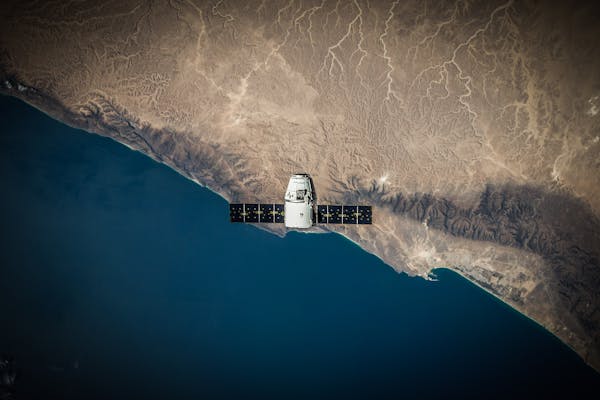
In an era where high-speed internet has become almost as essential as electricity and water, the quest for universal connectivity continues to shape technological advancements. One of the most exciting developments in this domain is SpaceX’s Starlink project, which aims to provide high-speed internet access to every corner of the globe through a constellation of low Earth orbit (LEO) satellites. The benefits of Starlink satellites are numerous and transformative, offering solutions to some of the most persistent challenges in global connectivity.
Introduction to Starlink
Starlink is a satellite internet constellation project developed by SpaceX, the aerospace manufacturer and space transport services company founded by Elon Musk. The project envisions deploying thousands of small satellites in low Earth orbit to create a network capable of delivering high-speed internet access worldwide. This ambitious initiative aims to overcome the limitations of traditional ground-based internet infrastructure and provide reliable connectivity even in the most remote and underserved regions.
Global Connectivity: Bridging the Digital Divide
One of the primary benefits of Starlink satellites is their potential to bridge the digital divide. Traditional internet infrastructure relies heavily on ground-based cables and cellular towers, which can be prohibitively expensive to deploy in remote or rural areas. In contrast, Starlink’s satellite-based system can deliver high-speed internet to regions where traditional infrastructure is lacking or non-existent.
- Remote Areas: Starlink’s satellites can provide internet access to isolated communities, remote research stations, and rural areas that are otherwise underserved. This connectivity can enable residents to access online education, telemedicine, and other essential services that rely on internet access.
- Disaster Relief: In the aftermath of natural disasters, traditional communication infrastructure is often damaged or destroyed. Starlink satellites can quickly restore internet connectivity, facilitating communication and coordination for relief efforts. This rapid response capability can be crucial in saving lives and speeding up recovery processes.
High-Speed Internet with Low Latency
Another significant benefit of Starlink satellites is their ability to deliver high-speed internet with low latency. Unlike traditional geostationary satellites, which orbit at a much higher altitude and experience higher latency due to the long distance signals must travel, Starlink satellites operate in low Earth orbit. This lower altitude reduces latency, which is the delay between sending and receiving data.
- Enhanced User Experience: Low latency is critical for applications that require real-time interaction, such as online gaming, video conferencing, and live streaming. Starlink’s low Earth orbit constellation can provide the high-speed, low-latency connection necessary for these activities, offering a user experience comparable to or even exceeding that of traditional terrestrial internet connections.
- Improved Productivity: For remote workers and businesses, low-latency internet can significantly enhance productivity. Employees working from home or traveling can stay connected with their teams and access cloud-based tools and resources without the frustration of slow or unreliable internet.
Scalability and Flexibility
The modular nature of Starlink’s satellite constellation offers scalability and flexibility that traditional internet infrastructure cannot match. The constellation is designed to expand as needed, with new satellites being launched periodically to increase coverage and capacity.
- Adaptive Capacity: As the demand for internet access grows, Starlink can scale its network to accommodate more users and higher data usage. This flexibility ensures that the network can keep up with changing technological needs and user requirements.
- Resilience and Redundancy: The distributed nature of Starlink’s satellite network provides built-in redundancy and resilience. If one satellite fails or becomes inoperative, other satellites in the constellation can continue to provide coverage, reducing the risk of service interruptions.
Economic Impact and Business Opportunities
The deployment of Starlink satellites has the potential to stimulate economic growth and create new business opportunities. By providing reliable internet access to underserved regions, Starlink can open up new markets and enable businesses to reach customers and clients who were previously inaccessible.
- New Markets: Businesses in remote areas can now access global markets and compete on a more level playing field. This access can lead to economic development and increased opportunities for entrepreneurship and innovation.
- Job Creation: The development and maintenance of the Starlink network involve a range of jobs, from satellite manufacturing to ground-based support roles. Additionally, improved internet access can support local businesses and create new employment opportunities in remote areas.
Education and Research Advancements
The benefits of Starlink satellites extend significantly into the realm of education and research. Access to high-speed internet is a fundamental requirement for modern education and research activities, and Starlink can facilitate advancements in these areas by providing connectivity to previously isolated locations.
- Remote Learning: Starlink’s internet access can enable students in remote areas to participate in online learning programs, access educational resources, and engage with teachers and peers. This connectivity can help reduce educational disparities and provide equitable learning opportunities.
- Scientific Research: Remote research stations, such as those in the Arctic or deep oceans, often struggle with limited internet access. Starlink’s satellite network can enhance communication capabilities for researchers, allowing for real-time data transmission, remote collaboration, and access to online databases and resources.
Environmental and Technological Considerations
While the benefits of Starlink satellites are extensive, it’s important to consider the environmental and technological implications of deploying thousands of satellites into orbit. The project has sparked discussions about space debris and the potential impact on astronomical observations.
- Space Debris: The proliferation of satellites in low Earth orbit raises concerns about space debris and the risk of collisions. SpaceX is actively working on solutions to mitigate these risks, including satellite deorbiting plans and collaboration with other space agencies to track and manage space debris.
- Astronomical Observations: The brightness of satellites can interfere with astronomical observations, leading to concerns among scientists and astronomers. SpaceX has taken steps to address these concerns, such as implementing measures to reduce satellite brightness and working with the astronomical community to minimize interference.
Future Prospects and Innovations
Looking ahead, the benefits of Starlink satellites are likely to expand as technology evolves and new innovations are introduced. SpaceX’s vision for the Starlink project includes several exciting prospects:
- Global Coverage: The goal of achieving global internet coverage is within reach as more satellites are launched and deployed. This comprehensive coverage can further reduce digital divides and provide connectivity to the most remote and underserved regions.
- Integration with Other Technologies: Future developments may include integration with emerging technologies such as 5G networks and advanced satellite communication systems. This integration could enhance the capabilities of the Starlink network and offer even greater benefits to users.
Conclusion
The benefits of Starlink satellites are vast and transformative, offering solutions to some of the most significant challenges in global connectivity. From bridging the digital divide and providing high-speed internet with low latency to stimulating economic growth and advancing education and research, Starlink’s satellite constellation has the potential to revolutionize the way we connect and communicate.
As the project continues to develop and expand, it is crucial to address environmental and technological considerations while maximizing the positive impact of this innovative network. The ongoing advancements and future prospects of Starlink satellites hold great promise for enhancing connectivity and improving lives around the world.


